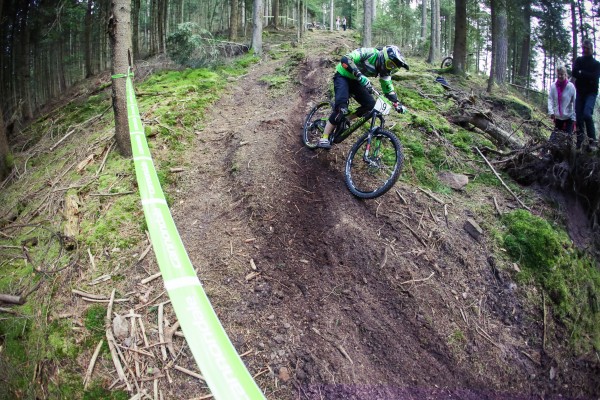[ad3]
One of the first performance enhancing things that can be done to most bikes is a tubeless conversion. With tubeless tyres it is possible to increase the available grip and reduce susceptibility to many forms of punctures.
Bagnoli Bike have shown us a simple method of converting a tube set-up to tubeless.
Before you start though it is important to make sure you have the following.
Tubeless ready tyres (highly recommended as side walls are stronger).
Tubeless sealing liquid.
Tubeless wheel valves.
Tubeless rim tape or similar.
A compressor or high volume pump.
Mounting fluid.
Isopropyl alcohol.
Small sharp tool.
Follow the technique below for an efficient sealed tubeless tyre.

Start with a clean mounted wheel and remove it from the bike.
Remove the tyre and tube.
Remove the rim tape.
With isopropyl alcohol clean the rim surface.
[ad3]
Make sure the rim is completely clean and all berms and material is gone also make sure the rim is not damaged or bent on the beads.
With a correct width tubeless rim tape for your rim type, start to apply the tape 10 cm to one side of the valve opening. There are many tubeless tapes on the market, they all do a similar job, choice is personal.
Ensure the tape is well stuck with no air bubbles and straight in the rim.

Once applied you can see how important the correct width is, don’t use too wide or narrow tape, as the sealing liquid will escape around the edges more easily.
Once the rim is covered finish off 10 cm the other side of the valve hole.

Cut neatly and finish sticking the tape.
Make a final check that there are no air pockets all the way around the rim.
Use a small sharp implement and make a small hole in the tape above the valve hole. Do not use a large tool as you risk splitting the tape and reducing the ability to seal.
[ad3]
Take your tubeless valves, it is always best to use new valves as old valves might be full of dried sealing liquid and be difficult to inflate.
It is recommended to use conical shaped valve bases as they are drawn better into the valve hole for most rim types.
Using a square shaped valve is not recommended always, as they have a tendency to twist when tightened and reduce sealing effectiveness.
The rim is ready to mount the tyre.
Use a tubeless ready tyre where possible, most tyres are marked if they are tubeless compatible.
Note the extra reinforcement and also the bead is shaped to grip the rim better.
Place/hang the wheel in an easy to access place and put the tyre on, if it is older it will most probably mount more easily. If not then use some mounting fluid on the rim to aid pushing the bead on.
Take the required amount of sealing liquid, in most cases it is around 50-80 grams.
Poor the liquid into the lower part of the tyre (hence why it is good to have the wheel suspended).
We used caffe-latex sealing liquid.
The recommended amounts are printed on the bottle.
Remount the second part of the tyre starting at the bottom of the wheel.
Finish mounting the tyre.
Note tubeless valves can be unscrewed to allow air to flow in faster and also sealing liquid can be added if needed.
Use a compressor or high volume pump to seat the tyre on the rim. Apply 35 PSI initially.
Check the rim for any small leaks and ensure the tyre is seated properly. If not deflate and re-seat and repeat.
If you are not riding immediately then spin the wheel with the liquid dispersing around the tyre. Leave the wheel for 10 mins then recheck if it seals properly. Make sure the rims are not damaged or bent as it will make it harder to seal. Sometimes is can take longer for the liquid to find it’s way into every gap and create a lasting seal.
Once sealed, make a final pressure adjustment. It is possible to run tubeless tyres a little softer as pinch punctures are not possible. Play with pressures according to the trail you ride and how it feels for your liking.
[ad45]



































